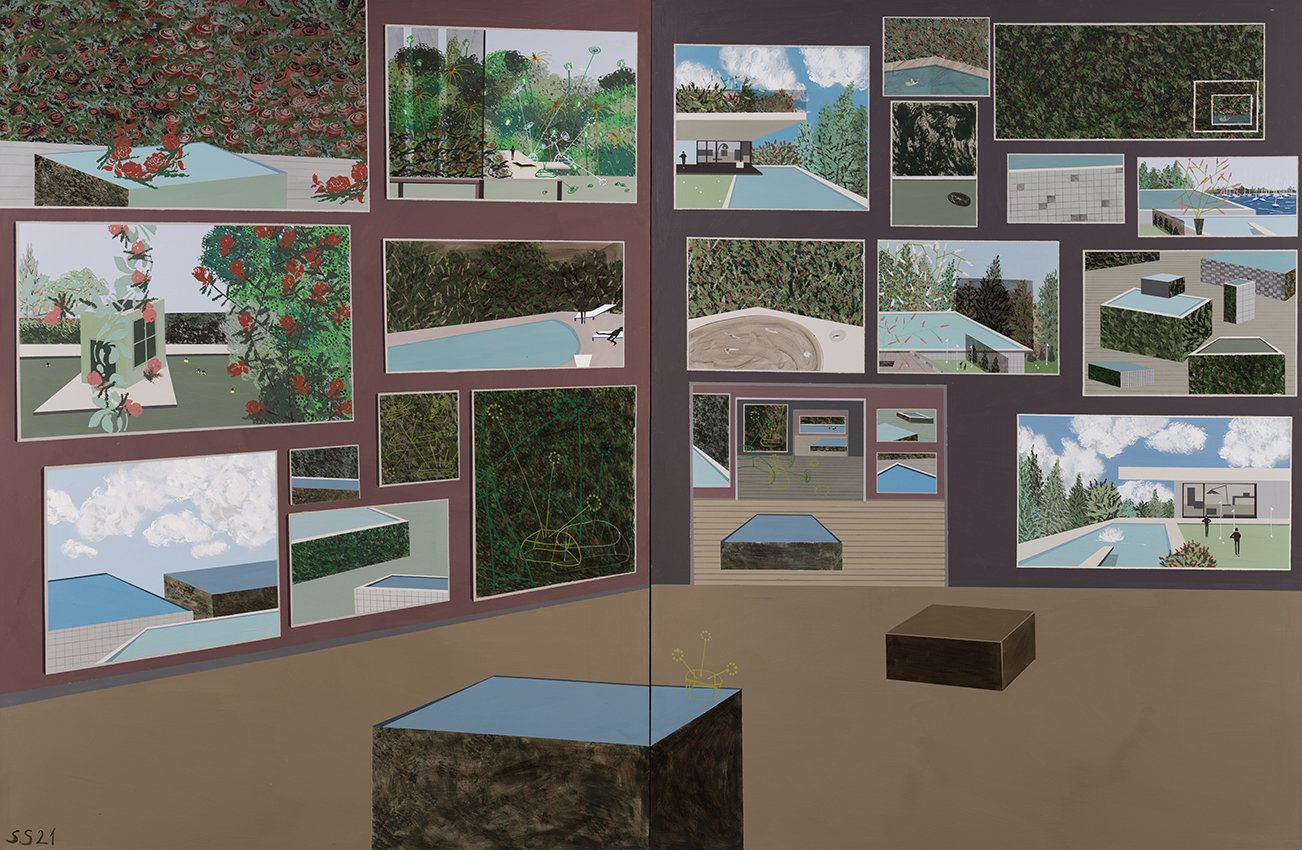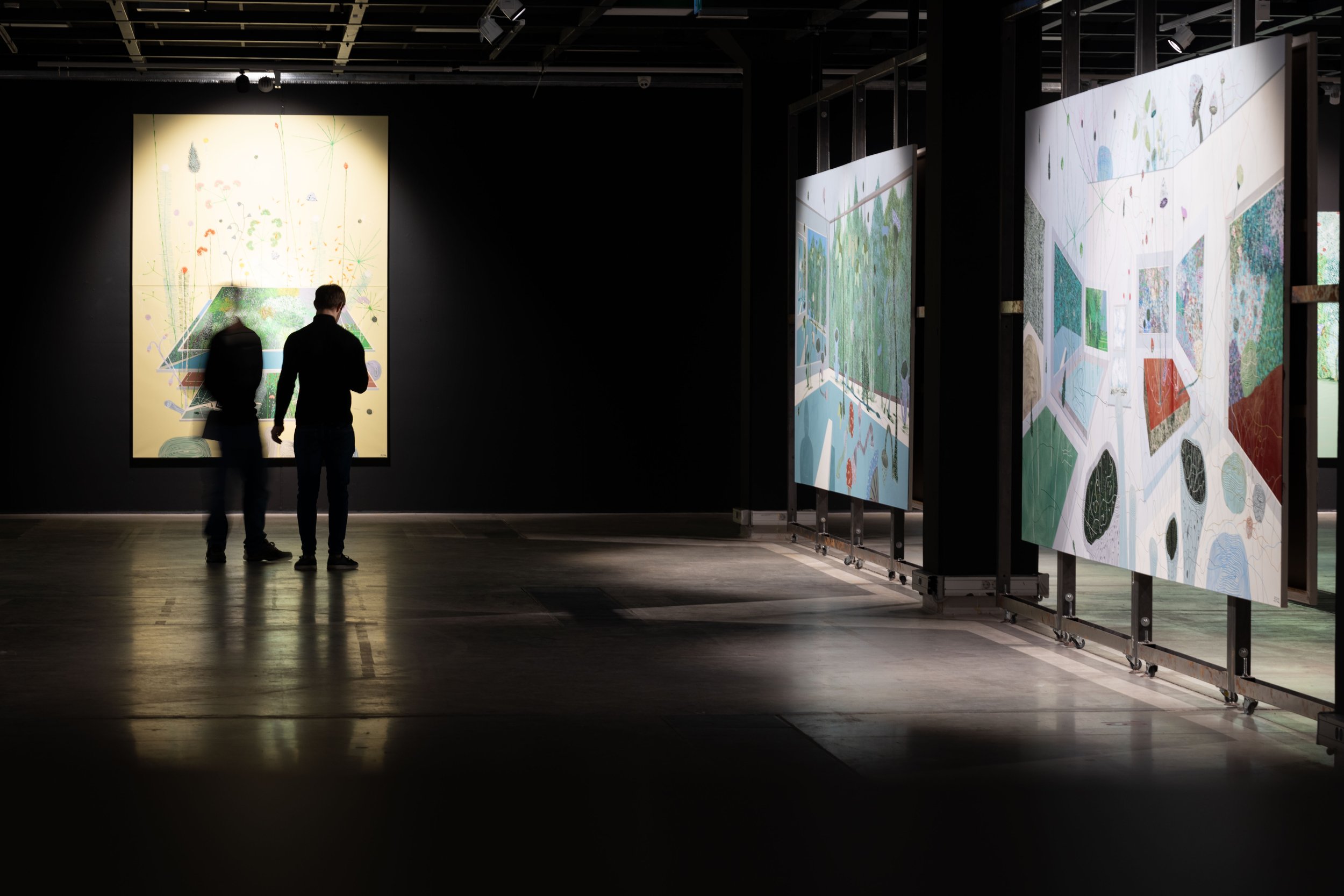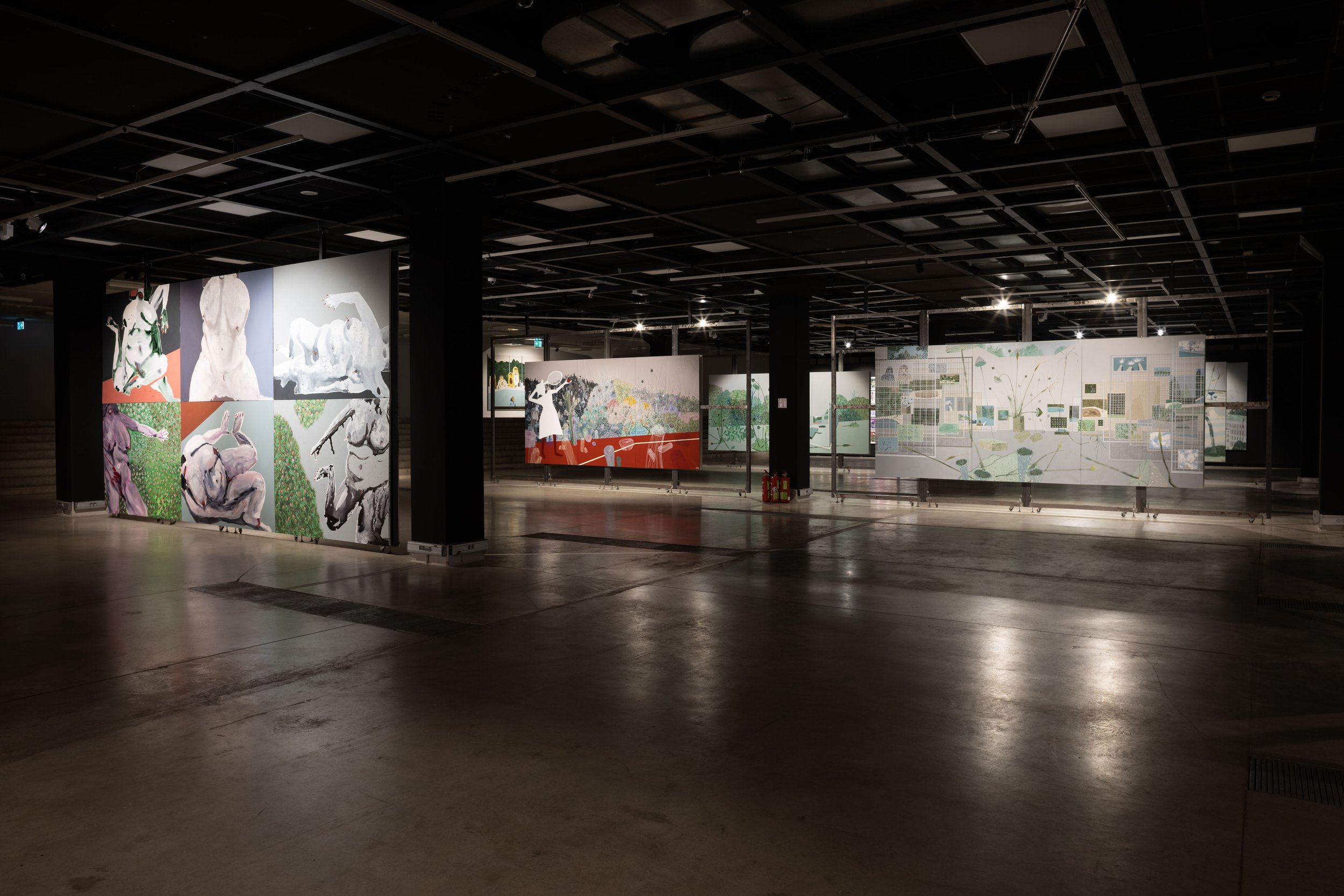SOLO EXHIBITIOn “Exhibitions that never happened: thickets“ AT RIGA ART SPACE (february-march 2023)
Sandra could definitely be placed in the field of landscape painting, the most reliable, tradition-rich and popular genre of Latvian painting. The title of the exhibition itself suggests this, as it contains the most typical characteristic of the Latvian landscape: thicket- a greyish weave of small, fine shrubs and fallen trees, which interpreters of the landscape genre such as Andris Eglītis and Dace Lielā have tackled in their paintings. However, Sandra tackles the landscape in her own way, incorporating not only playfully decorative elements, such as mushrooms that can grow both in the pool water and on the roofs of apartment blocks, but also demonstrating the ability to place a self-contained, decorative painting that is pleasing to the eye and that does not rant and rave, within a larger, intellectually weighed framework. This system holds the mushrooms together on the smoothly painted acrylic surfaces and thoughtfully guides the viewer from composition to composition on a long journey, rather than bombarding with short, bright, unrelated markers ‘Venice’, ‘New York’, ‘Cēsis’. The understanding that a landscape is an imprint of a place on a canvas, a small piece of greenish paradise, carefully brought to the viewer by a landscape painter, is the most traditional and uninteresting expression of landscape. Sandra is doing something completely different and in her interviews she has repeatedly stressed that her understanding of painting can be most accurately described by the terms “story, storytelling, seriality” - where the story continues from one series of paintings to the next, where something happens behind the paintings or between the paintings, in the thickets. Where elements of the previous series are repeated verbatim, the house is painted in the new series in exactly the same place on the plane, only this time the front wall of the house has disappeared and the landscape behind the house is overgrown with a confused tangle. “Painting is the slowest of all cinema”, Sandra once said in a conversation.
But what is this cinema painted by Sandra about, beyond the overgrown mushrooms and horsetails, beyond the stripes and dots of acrylic markers? “Are these psychedelic mushrooms that are slowly taking over your world?” - this is the question Sandra has received from art lovers in both Vilnius and Barcelona.
The metaphor of the thicket in the new solo exhibition has to be taken more seriously, not to say more depressingly, and the first part of the exhibition's title - EXHIBITIONS THAT NEVER HAPPENED - suggests this. In monumental buildings whose front walls have disappeared and roofs will probably never be laid, paintings continue to hang on the walls in spite of everything. The attentive viewer will be able to recognize Sandra's paintings or the most characteristic elements of her work in these paintings within paintings - tennis courts, swimming pools, portraits of matryoshkas. In the first approach, the repeated painting of already painted paintings onto a new picture plane could be explained as, for example, an interest in the application of mathematical algorithms to painting, or in a harsher version - egotistical tinkering around one's art. However, the exhibitions that never happened could have happened for various reasons - one of the readings offered by Strēle's painting is clearly related to the absence of the Latvian museum of contemporary art. Large-scale painting, in order to reach its delighted (enraged, bored) viewer, needs a large-scale space - both for exhibiting the works and for the next steps: storage, restoration, research. And even with the possible presence of a contemporary art museum, sooner or later artists who work a lot are forced to think about ways of storing their art because, after all, where is the large-scale art really going to stay? What happens to a work of art when the artist no longer has a say over it? One of the most striking elements in the new series of paintings is the garden gnome. If the viewer sees Sandra's paintings on the walls of the unfinished building, and garden gnomes in the garden of the building half-swallowed by the jungle - who could be the inhabitants or owners of this building? Who could combine a balanced large-scale painting and a garden gnome, bearing in mind that the garden gnome has traditionally been interpreted as a symbol of light-heartedness, but in the hands of the artist - a symbol of madness, alienation, loneliness, but still also a joke?
It is a museum of contemporary art that would be able to combine the garden gnome with David Hockney's famous "Splash" and Niklāvs Strunke’s "The Man Who Walks Into a Room" - two paintings that Sandra has interpreted in her own paintings. And thanks to the presence of Hockney and Strunke, this exhibition is not egotistical scribbling around with polite, nuanced paintings. Sandra's story of seriality has begun to make her aware of herself as one of a very long line of painters, rich in tradition, where artists are connected by an invisible root system, capable of producing new sprouts even in the most unfriendly and abandoned places.
Rasa Jansone.
Photo: Didzis Grozds, Pēteris Rūcis


































